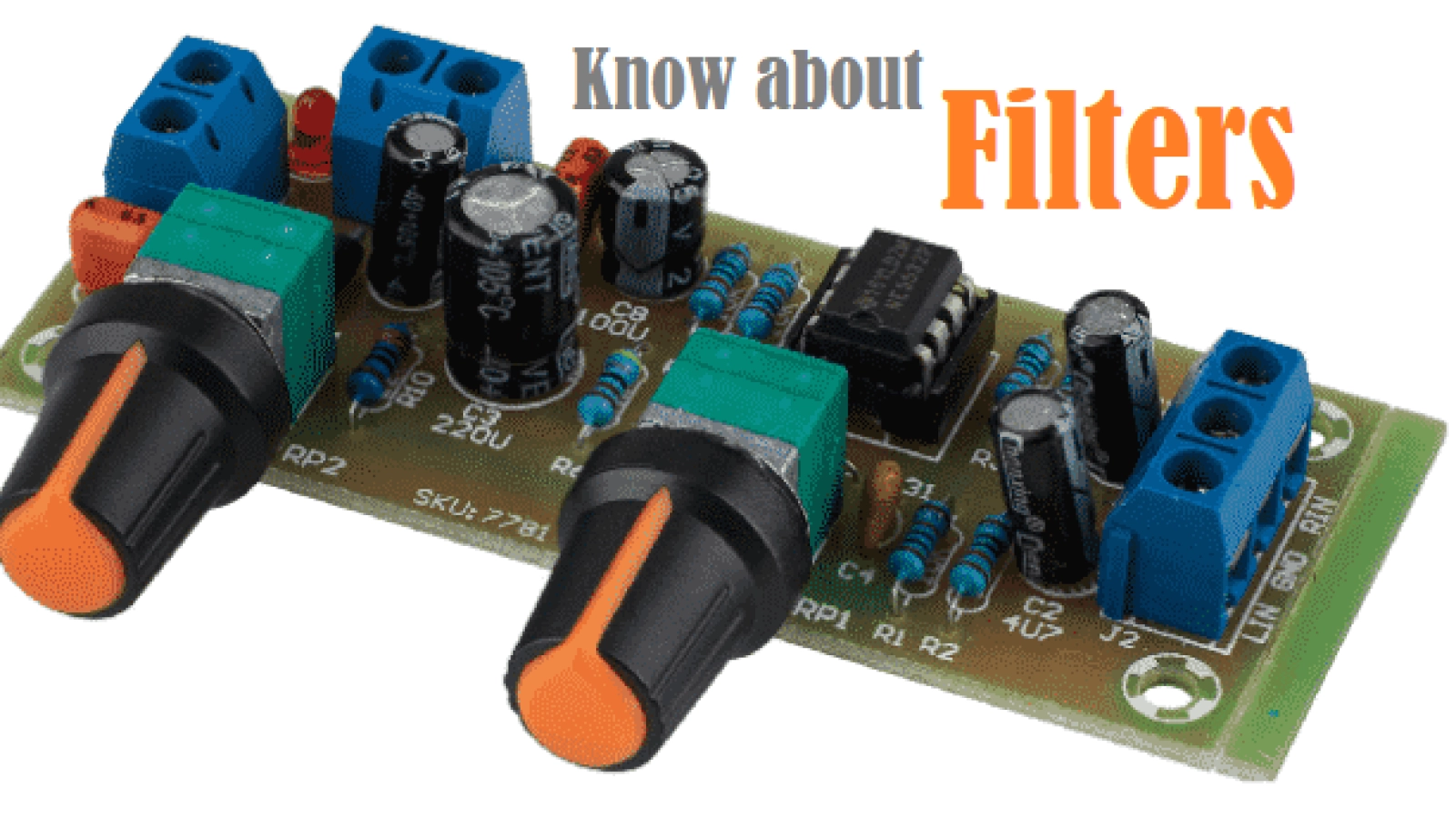A filter is something that can delete, distort, or generalize the message we’re trying to share. And filters are in place for both the sender and receiver in every single conversation. Electronic filters remove unwanted frequency components from the applied signal, enhance wanted ones, or both. They can be: passive or active. analog or digital. Digital communication is any type of communication that relies on the use of technology. There are many kinds of advanced correspondence, ordinarily alluded to as computerized correspondence channels. These incorporate email, calls, video conferencing, and many kinds of texting like SMS and web chats. In signal handling, a channel is a gadget or cycle that eliminates a few undesirable parts or elements from a sign.
What are Filters
Filters are essential building blocks of any Electronic and Communication System that alter the amplitude and/or phase characteristics of a signal with respect to frequency. The filter is basically a linear circuit that helps to remove unwanted components such as Noise, Interference, and Distortion from the input signal. Ideally, the Filter alters the relative amplitudes of the various frequency components and the phase characteristics and its ‘Gain’ depends entirely on the signal frequency.
 Figure-1: Block Diagram of filter operation.
Figure-1: Block Diagram of filter operation.
Filter is mainly classified into two types.
1.Active Filter.
2.Passive Filter.
Active Filters
Filter Circuit which consists of active components like Transistors and Op-amps in addition to Resistors and Capacitors is called as active filter.
Passive Filter
Filter circuit which consists of passive components such as Resistors, Capacitors and Inductors is called as Passive Filter. The operating frequency range of the filter banks on the components used to build the circuit. Hence the filter can be further categorized based on the operating frequency of a particular circuit. They are:
∙ Low Pass Filter
∙ High Pass Filter
∙ Band Pass Filter
∙ Band Stop Filter
∙ All Pass Filter
Low Pass Filter:
It is a type of Filter which attenuates all the frequencies above the cut-off frequencies. It provides a constant output (gain) from zero to cut-off frequency.
 Figure-2: Low Pass Filter Characteristics (a) Actual (b) Ideal
Figure-2: Low Pass Filter Characteristics (a) Actual (b) Ideal
High Pass Filter
It is a type of Filter which attenuates all the frequencies below the cut-off frequencies. It provides a constant output (gain) above the cut-off frequency.
 Figure-3: High Pass Filter Characteristics (a) Actual (b) Ideal
Figure-3: High Pass Filter Characteristics (a) Actual (b) Ideal
Band Pass Filter
It is a type of filter which allows specific Band of frequencies to pass through and all other frequencies outside the band are attenuated.
 Figure-4: Band Pass filter characteristics
Figure-4: Band Pass filter characteristics
Band Stop Filter:
Specific Band of frequencies gets rejected and allows passing of frequencies outside the Band.
 Figure -5: Band Stop Filter
Figure -5: Band Stop Filter
All Pass Filters
It is a type of filter which passes all frequencies equally. It is also known as Phase-Shift filter, time-delay filter as the output voltage shifts in phase with respect to input voltage but they are equal in magnitude.
 Figure 6: All Pass Filter.
Figure 6: All Pass Filter.
Application of Filters –
∙ Filter Circuits are used to eliminate background Noise
∙ They are used in Radio tuning to a specific frequency
∙ Used in Pre-amplification, Equalization, Tone Control in Audio Systems ∙ They are also used in Signal Processing Circuits and Data Conversion ∙ Filter Circuits are extensively used in Medical Electronic Systems
Advantages of Filters
The advantages are:
∙ They are economical or cost-effective
∙ Unlike passive filter circuits, Active Filter Circuits require power supply
Disadvantages of Filters
The disadvantages are:
∙ Circuits are bulky
∙ Limited Bandwidth
∙ Increased sensitivity to variation in circuit parameters
Md. Jayed Bin Murshed
Instructor
Department of Telecommunication

